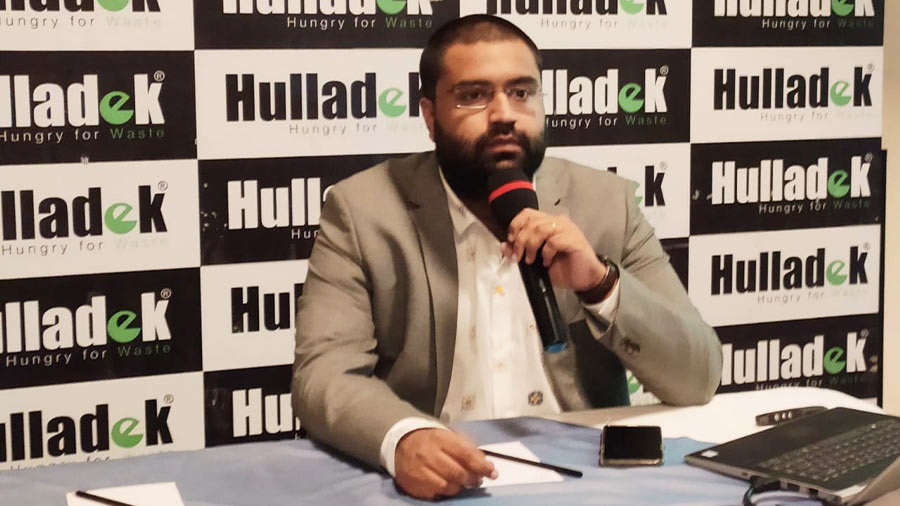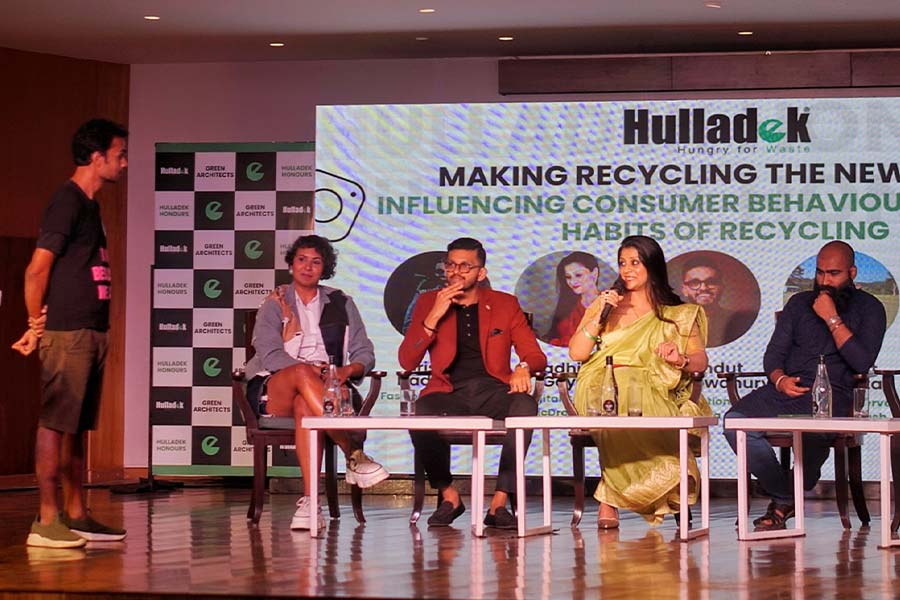Have you ever wondered what happens to your old computer or television once we discard them? What about old medical equipment like defibrillators and ECG machines? Or the fridges and chocolate cool boxes that are no longer required by corner shops? It is all waste in the end, and if it isn’t tackled properly, it becomes a burden on the environment. My Kolkata went to the Hulladek Recycling Central Warehouse in Ankurhati for a walkthrough with Nandan Mall, the chief managing director of Hulladek Recycling.
Hulladek’s inception moment
Nandan Mall was always a “neat freak”, as he described himself. From his school days itself, Mall was always neat, tidy and well organised. “I was very upset with the municipality’s waste management system. In school, we had a ‘Litter Club’, and I was the president and our work was to gather all the waste from the field after the lunch break to put everything in the correct bin,” said Mall about how he was introduced to recycling and waste management.
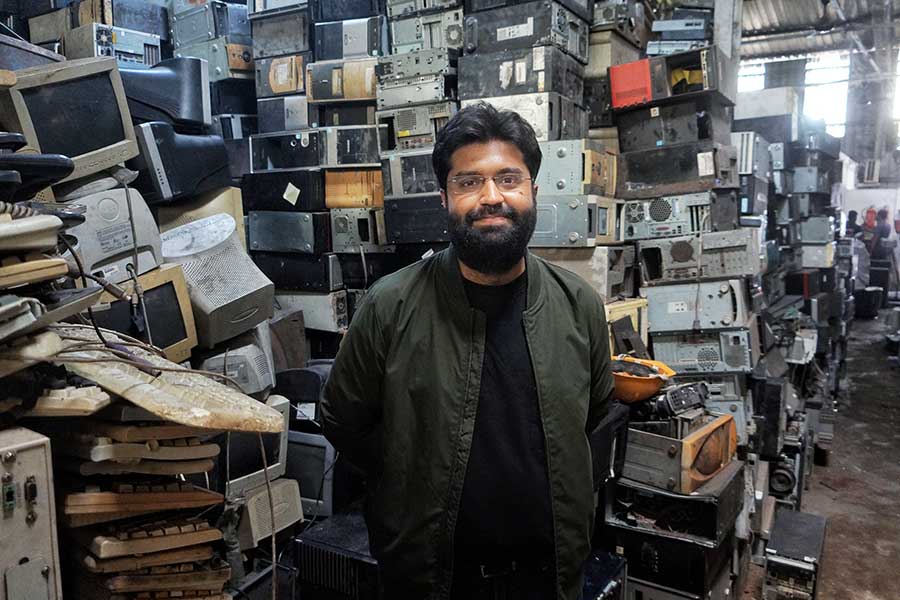
Nandan Mall, the 32-year-old CMD of Hulladek Recycling
At St. Xavier’s College, Mall entered a Business Plan competition, where the brief was ‘A Business of the Future’, something that would be relevant 10 years down the road. “In 2009, in Xavier’s, we made a presentation on e-waste management and the idea got a lot of traction and it stuck with me and Hulladek was born five years later,” Mall said about the inception of his company.
In the first year itself, Hulladek collected 35 tonnes of waste, and in 10 years’ time, that number has grown to 4,600 tonnes as of March 2024. In 10 years, Hulladek has not only grown massively, but so has their mission to help the environment. “The idea behind e-waste recycling is to break each product down to its natural form like glass, metal and plastic, something that is common to most electronic products,” said Mall.
What does Hulladek do?
With operations across 20 states, Hulladek collects e-waste from all over the country and segregates it before returning it to its natural form to be reused. With a warehouse in Guwahati for northeastern states and another one in Jamshedpur for eastern India, Hulladek segregates material in each warehouse before bringing it to the central warehouse in the outskirts of Kolkata – Ankurhati. All of the material is brought through trucks and dumped at the central warehouse.
“Once the material arrives at our central warehouse, we create different bays for different items.” There is an IT material bay that includes things like CPU, monitors, keyboards, etc. “We have a small refurbishing zone where we check for repairability or reusability. Once each item is identified for refurbishment, the material is sent to the Refurbishing Wing, where it is then refurbished,” said the 32-year-old CMD.
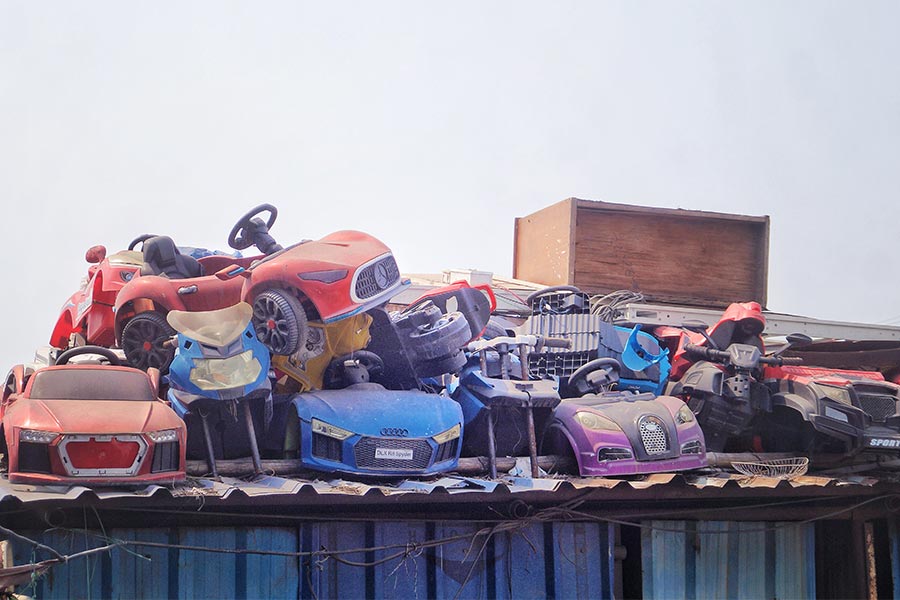
Toy cars await recycling at the warehouse
What happens to the items that cannot be repaired or have no reuse value? “Each item is broken down into its basic raw materials, which are metals, plastics and glass. If I take a keyboard for instance, it has three or four major components: a plastic body, a board inside, an iron frame, and copper and aluminium. When a keyboard is broken, the plastic is separated manually and the circuit board is sent for shredding and finally goes for precious metal extraction, where we recover silver, gold etc., out of it. The iron is manually dismantled and sent for treatment at a smelting unit, where it is melted into new iron” said Mall about the recycling process.
He added that “something we need to keep in mind for electronic waste is that it contains certain hazardous materials that can cause environmental damage if not recycled properly. The whole purpose of this unit is to identify hazardous material and ensure that it is sent to the right place for treatment.”
An example of hazardous waste at Hulladek’s warehouse is lead acid batteries. “Even monitors and printers have a certain amount of lead, so various kinds of hazardous elements are present in each e-waste item. Hazardous basically means anything that can cause environmental damage or even health issues if not handled properly. We ensure that all hazardous elements are removed and sent for proper treatment separately and then the materials are recycled to extract metals, plastics and glass that is reused,” explained Mall.
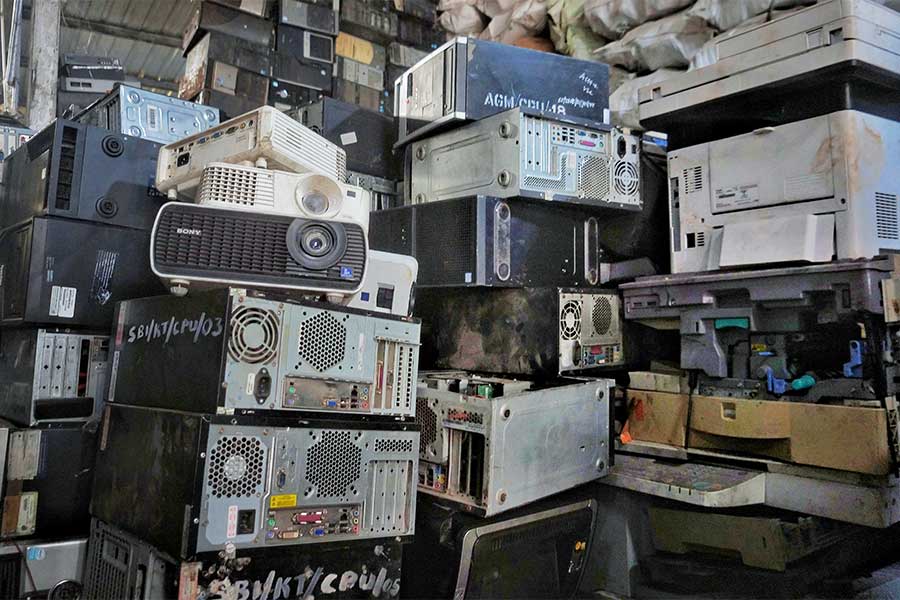
Stacks of computer CPUs at the warehouse
Hulladek identifies each kind of waste and segregates it before sending it to specialised recycling units, so each waste item can be recycled to its maximum potential.
“The idea is that instead of mining or extraction of new resources from Mother Earth, it is better to reuse what we have and make new products out of it. The concept is known as Urban Mining, where instead of mining from the earth, we are mining urban resources in order to reuse or generate raw materials production of new products to meet our daily demands. It isn’t necessary that materials mined out of electronics are used for making electronics only, it could be used for other purposes” said Mall, speaking about the importance of reducing mining of natural resources.
How does Hulladek collect so much e-waste?
Having collected 4,600 tonnes of e-waste in 10 years, the larger question here is how does one collect such materials and how has Hulladek Recycling been doing it?
“We do door-to-door waste collection — we go to homes and collect waste. We also have bilateral agreements with a lot of companies through contracts, so their waste comes to us. Apart from that, we have collection drives in communities, so we tie-up with an NGO for a collection drive and we take the waste they get. These are the primary sources we get waste from. We also get old medical equipment from hospitals and medical colleges.” said Mall.
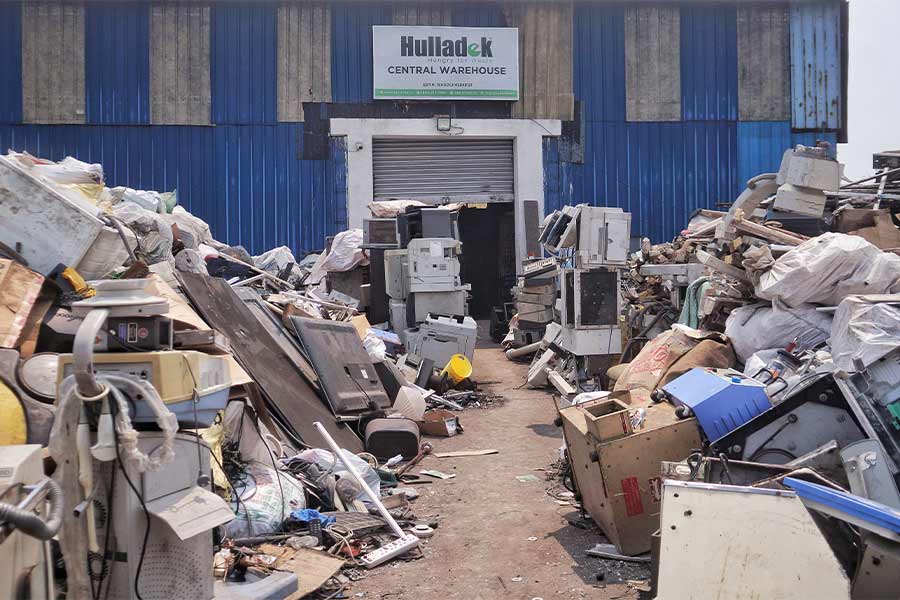
Hulladek has collected 4,600 tonnes of e-waste in 10 years
From large LED television sets to arcade games and medical equipment that are past their prime, Hulladek’s warehouse has become a home to all such equipment before they receive a new lease of life. Hulladek has contracts with Mondelez and Timezone to turn around their e-waste.
While Hulladek works in collection and segregation of e-waste, it is an important step in the recycling process. The e-waste industry is highly interlinked and interdependent, since a start-to-finish recycling process would need an operation at a mammoth scale with a vast area to bring in the waste and treat each component individually based on its particular needs.
Lithium-ion batteries can’t be recycled? Myth or reality?

Piles of discarded electronics at the warehouse
With the age of electric vehicles well and truly upon us, the question about lithium-ion batteries being recycled is at large. With several sources saying that lithium-ion batteries cannot be recycled, we asked the expert whether it is a myth or not. Mall said, “It is a half truth that lithium-ion batteries cannot be recycled. We do get quite a bit of lithium-ion batteries in the form of phones and laptops, but since the EV revolution has just started we haven’t yet treated EV batteries. It isn’t that the technology to recycle these batteries isn’t there — lithium-ion batteries are put through several stages of recycling. The first stage is extracting metals, Along with that, another product is extracted — called Black Mass — that contains lithium, nickel, manganese and cobalt. This technology isn’t available yet in India. It has been successful at the lab level, but there hasn’t been a breakthrough at the industrial level. But once there is a breakthrough, the recycling of EV batteries and lithium-ion batteries in general will become more large-scale, providing a solution to this problem.”
What next for Hulladek?
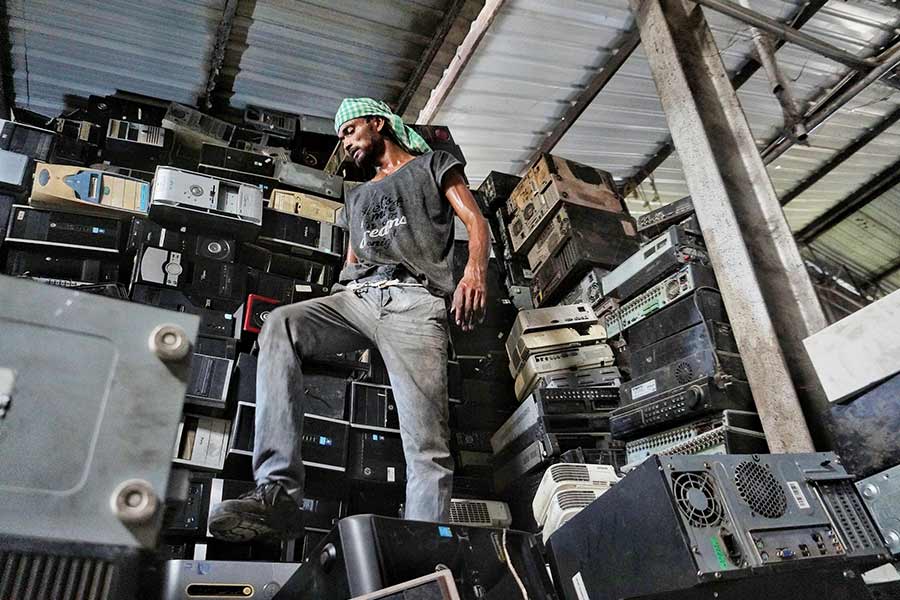
Hulladek’s employee ecosystem currently stands at 115
Hulladek is already segregating an average of eight tonnes of e-waste a day. While it seems like a large amount, it is still not much in comparison to the amount of e-waste that is unrecycled. Hulladek has taken old toner cartridges from printers and managed to find a way to reuse the old cartridges, “With a consortium of 5-6 recyclers, we set up an R&D to check if toner cartridges can be reused and that has been a big success, since we discovered that it can be done. The next thing we are looking at is ways of reusing CFL tube lights. Everyone has moved to LEDs and we are getting the last lot of CFL lights. Currently, we are exploring a way to reuse it in other industries,” said Mall.
Hulladek has 18 franchisees across the country, 65 employees work directly under Hulladek and including the 18 franchisees, Hulladek’s ecosystem currently stands at 115.
“Our goal is to reach the 25,000-tonne mark by 2028 and further on to 50,000 tonnes. Wastage is never going to end.” signed off Mall.
